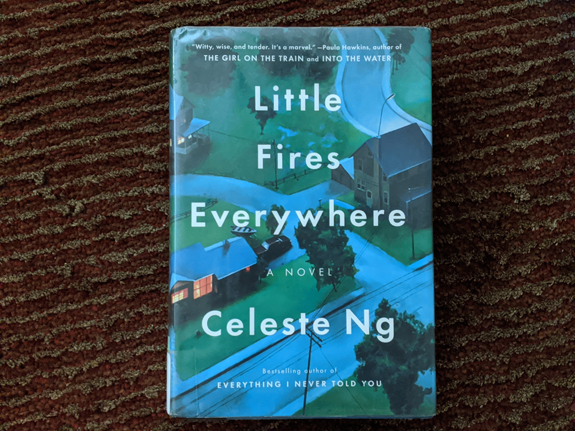Something I find myself thinking about a lot in these times is what rather mundane tasks now would look like to us a year ago. Take, for example, my reading of Celeste Ng’s “Little Fires Everywhere.”
I requested this book from my local library I believe late last year. It is a very popular book that has also been made into a Hulu series. There was a long wait. By the time my name got to the top of the list, the library system, along with most of public life, had just shut down in my state. The book was sitting on a shelf, with my name on it, ready for pickup whenever such a thing was possible again.
Eventually, places started to open up and I was delighted to get an email from the library system telling me exactly how I could proceed to obtain my long-awaited next read.
I pulled into a parking space across the street and got ready to execute the procedure. I dialed the secret (very public) phone number and after a few rings a voice asked for the password (my library card number). I was instructed to wait for the drop and for the person making it to make their getaway (go back inside the library) before I made my move. A masked figure emerged and placed my item in the drop area (a folding table on the front steps of the public library). She snuck back inside. Only I saw what went down. I put on my own mask and checked both ways to make sure the coast was clear (of traffic so I didn’t get hit by a car crossing the street). I tried to play it cool as I casually gripped the book and turned back in one clear motion. A quick retreat put me back in the car where I applied a special gel (hand santizer) to complete the mission.
Now having finished reading it, the book is back at the library, where I was assured it would sit in quarantine for a few days before its next secret mission starts. Godspeed, my friend.
The only thing I want to discuss about the book itself — it’s a great read, do it! — is its relationship to the Hulu show. I will absolutely follow the cliche and say the book is better. The show was enjoyable and if I had never read the book I think it would have been just fine. But having seen the particulars of the story, and very very much this applies to the ending, I thought the book was both more plausible and had more appropriate payoffs for the characters given the way they are built up.
Ng does a fun storytelling device where right on the first page you are presented with what is basically the end of the story — a woman staring at her charred house — leaving you the reader to immediately want to know who and why and how and when and everything. Ng then gradually builds the story in such a way that you at times forget about the fire part and settle in to learning the story of each character, and along the way convince yourself that more and more people could be responsible for various reasons.
Halfway through, I thought we were heading in one direction, but by the end it felt more and more like the most obvious character was the culprit. And when the answer was revealed, I was in no way mad. It made the most sense. Unlike the ending the show went with. Of all the plausible arsonists, they were not it. I think this is a popular enough book that if you’ve read it, all of that is enough for you to know who I’m talking about, and if you haven’t, nothing is given away and you should go enjoy!
